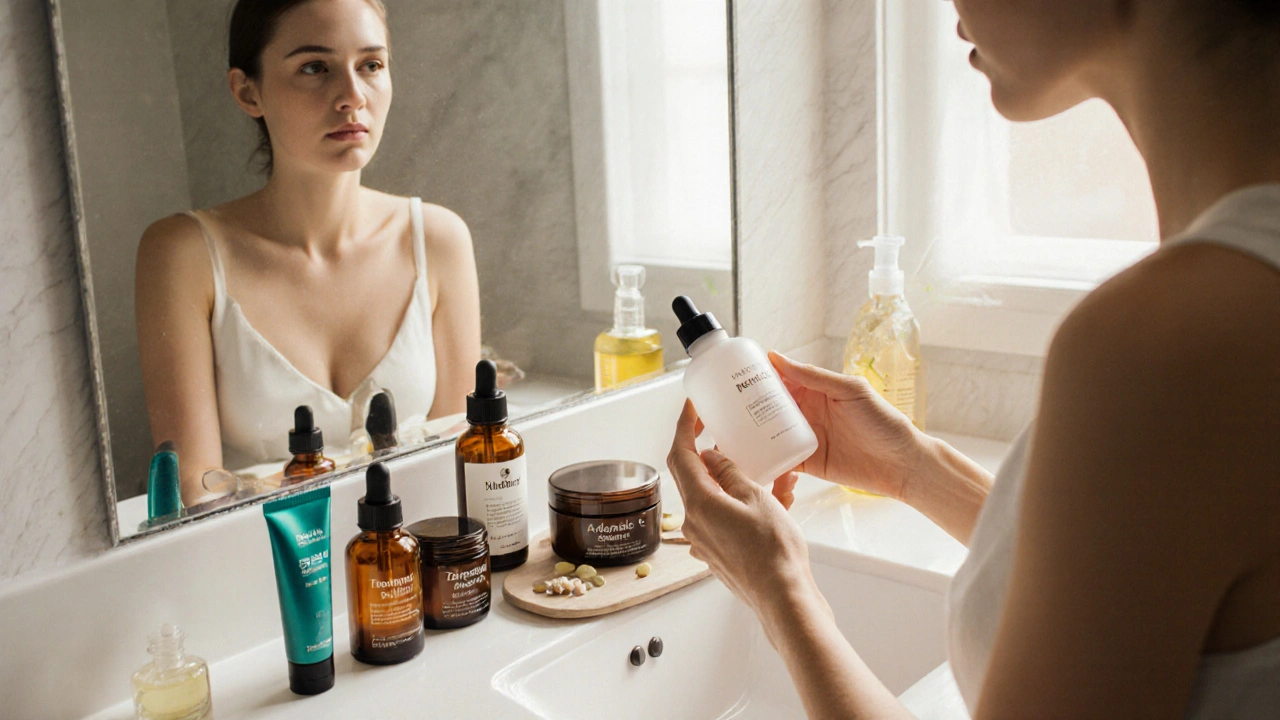Retin‑A 0.05%: How to Use This Acne Cream Safely and Effectively
If you’ve heard that Retin‑A 0.05% can clear up stubborn acne, you’re not alone. This thin gel or cream contains tretinoin, a form of vitamin A that speeds up skin cell turnover. The result? Less clogged pores and smoother skin. But the product can also cause redness, peeling, and irritation if you don’t use it right. Below you’ll find a practical guide that walks you through the first steps, daily routine, and simple tricks to keep side effects to a minimum.
Getting Started with Retin‑A
First things first: always get a prescription from a doctor or dermatologist. They’ll confirm that 0.05% strength fits your skin type and acne severity. When you receive the tube, read the label for any specific storage instructions—most of the time, keeping it at room temperature is fine.
Before you apply anything, wash your face with a gentle, non‑scrubbing cleanser. Pat the skin dry with a soft towel; you want it completely dry because damp skin can increase irritation. Take a pea‑size amount of Retin‑A and dab it onto your forehead, cheeks, chin, and nose. Then spread it in a thin, even layer, avoiding the eyes, nostrils, and mouth.
Start slow: use the cream every other night for the first two weeks. If your skin tolerates it well, you can move to nightly use. Many people notice a mild tingling feeling at first—that’s normal and usually fades as your skin gets used to the treatment.
Tips to Avoid Common Side Effects
Redness and peeling are the most common complaints. To keep these under control, follow a few easy steps:
- Moisturize right after application. Wait about 20 minutes, then use a fragrance‑free moisturizer. This helps lock in moisture and reduces flakiness.
- Wear sunscreen daily. Retin‑A makes skin more sensitive to UV light, so a broad‑spectrum SPF 30 or higher is a must, even on cloudy days.
- Limit other active ingredients. Skip other strong acne products (like benzoyl peroxide or salicylic acid) on the same night you use Retin‑A. You can still use them on alternate evenings.
- Stay hydrated and eat a balanced diet. Good hydration supports skin repair, and a diet rich in fruits, vegetables, and omega‑3 fatty acids can lessen inflammation.
If you experience severe burning, swelling, or a rash that doesn’t improve after a week, stop using the cream and call your doctor. They may lower the concentration or suggest a different schedule.
Patience is key. Most users start seeing noticeable improvements after four to six weeks, but full results can take three months or more. Keep a short journal or take weekly photos to track progress; many people find visual proof motivates them to stick with the routine.
Remember, Retin‑A 0.05% is a powerful tool, not a magic wand. Pair it with a simple skincare routine—cleanser, moisturizer, sunscreen—and you’ll give your skin the best chance to clear up acne while staying healthy.

Retin‑A 0.05% (Tretinoin) vs. Top Skin‑Care Alternatives
A detailed comparison of Retin‑A 0.05% (tretinoin) with common alternatives like adapalene, tazarotene, retinol, azelaic acid, and vitaminC, covering effectiveness, cost, side effects, and who should use each.
